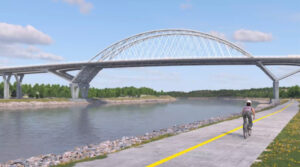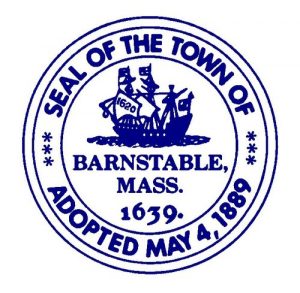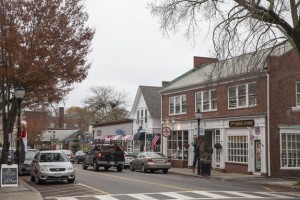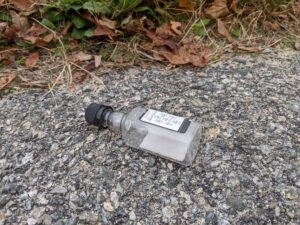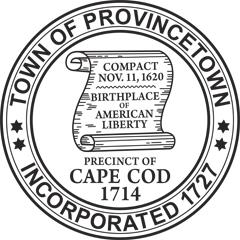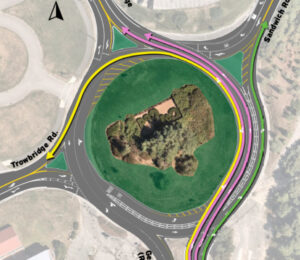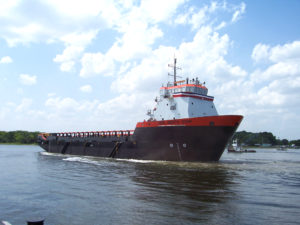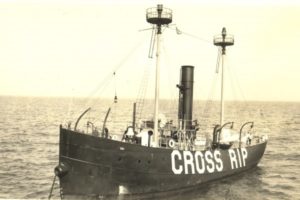
The Cross Rip Lightship #6 was pulled off its mooring by ice in 1918, and foundered with all hands. Courtesy of the Nantucket Historical Association
HYANNIS – The floating lighthouses that once occupied the channels around Cape Cod are long gone, lost to storms, failed moorings, collisions, disrepair and the inevitable forward march of technology. But for more than 100 years, from the mid-1800s to the late-1960s, lightships marked the way for thousands of sailors, fishermen and commercial mariners. Positioned strategically on navigation routes, lightships resided where land-based lighthouses could not be erected.
After the American colonies were first established, the sea route between New York and Boston, by way of the outer shores of Cape Cod, served as a crucial commercial shipping avenue for raw materials, finished goods, and passengers. Shoals, fog, and storms made the route hazardous, so by the nineteenth century the United States Lighthouse Service started to build and designate lighted, anchored vessels marking safe passage through the Nantucket and Vineyard Sounds.
Ships could navigate from lightship to lightship by using nautical charts crafted to show their positions. One such chart drafted by George Eldridge (circa 1924) is housed in the Cape Cod Maritime Museum in Hyannis as part of their ongoing Lightships of Cape Cod exhibit.
“It is a popular exhibit,” says Cape Cod Maritime Museum Executive Director Liz Rabideau, “and it is interesting to see that so few people know about them, yet they played such a vital part in protecting ships navigating around Cape.”
Also on display are historical photos and two scale models of the Pollock Rip and Cross Rip Lightships, each named for a resident shoal. With wooden hulls from 100- to 150-feet in length, brightly painted to increase visibility, the original ships used hand-held fog bells and whale oil lanterns. Over time, kerosene replaced oil, in turn replaced by gas acetylene. A fresnel lens, like those of stationary lighthouses, sent bright beams farther out to sea. Steel replaced wood, and eventually generator-run electrical equipment beamed high wattage light and fog warnings to passing ships.
For men who manned the lightships, time aboard was alternately isolating and terrifying. It was hazardous duty, as the ships were constantly battered by rough seas, high winds, shifting sands, and collisions. But not until the 1940s were the crews transitioned over to all military personnel, supplied by the US Coast Guard.
“The work was dangerous, but also so tedious and boring,” says Rabideau. And like whalers carving scrimshaw, early crews aboard the Nantucket Shoals Lightships diverted themselves with basket making, which became a signature and renowned artisan craft.
On his “threeharbors.com” website, former Harwich Harbormaster Tom Leach has posted a first-hand account from 1891 of a lightship crew member on the Nantucket, New South Shoal:
“Upon this tossing island, out of sight of land, exposed to the fury of every tempest, and without a message from home during all the stormy months of winter, and something even longer, ten men, braving the perils of wind and wave, and the worst terrors of isolation, trim the lamps whose light warns thousands of vessels from certain destruction.”
Starting in 1820, the U.S. government established 116 lightship stations. Around the turn of the twentieth century, there were more than 50 lightships stationed in the United States with almost half of those located in waters leading to and surrounding Cape Cod.
Lightships were replaced and renumbered as needed, sometime for tragic reasons. The Cross Rip Lightship #6, for example, was pulled off its mooring by ice in 1918, and foundered with all hands. Nantucket Lightship #117 was cut in half by a collision with the RMS Olympic in 1934 with a loss of half her crew. Several of the Pollock Rip Lightships were pulled off station, leading to its nickname “the happy wanderer.” Each time the Lightship ripped free, the US Lightship Service would put another vessel into service, manned with brave souls.
The last active duty lightship on its station was the Nantucket Lightship #613, built in 1952. Decommissioned in 1983, it was replaced by a Large Navigation Buoy.
There is still a way — a very expensive way — to experience for yourself what it would be like to live on a Lightship (albeit with many more comforts than the original crews enjoyed). Nantucket Lightship #612, a sister ship to Nantucket Lightship #613, was purchased in 2000 by former State Senator Bill Golden and his wife. The couple saved the historic ship from the scrapyard and renovated it into luxury quarters. With six bedrooms and six baths, 128 feet long, the vessel is docked at Commercial Wharf in Boston and can be purchased for $5.2 million.
The Goldens are not abandoning their Nantucket Lightship relationship, however. Several years ago they also bought the restored Lightship #613, and have plans to put it back into service as a floating restaurant and museum in New York City.
By LISA CAVANNAUGH, Cape Cod Commercial Fishermen’s Alliance




